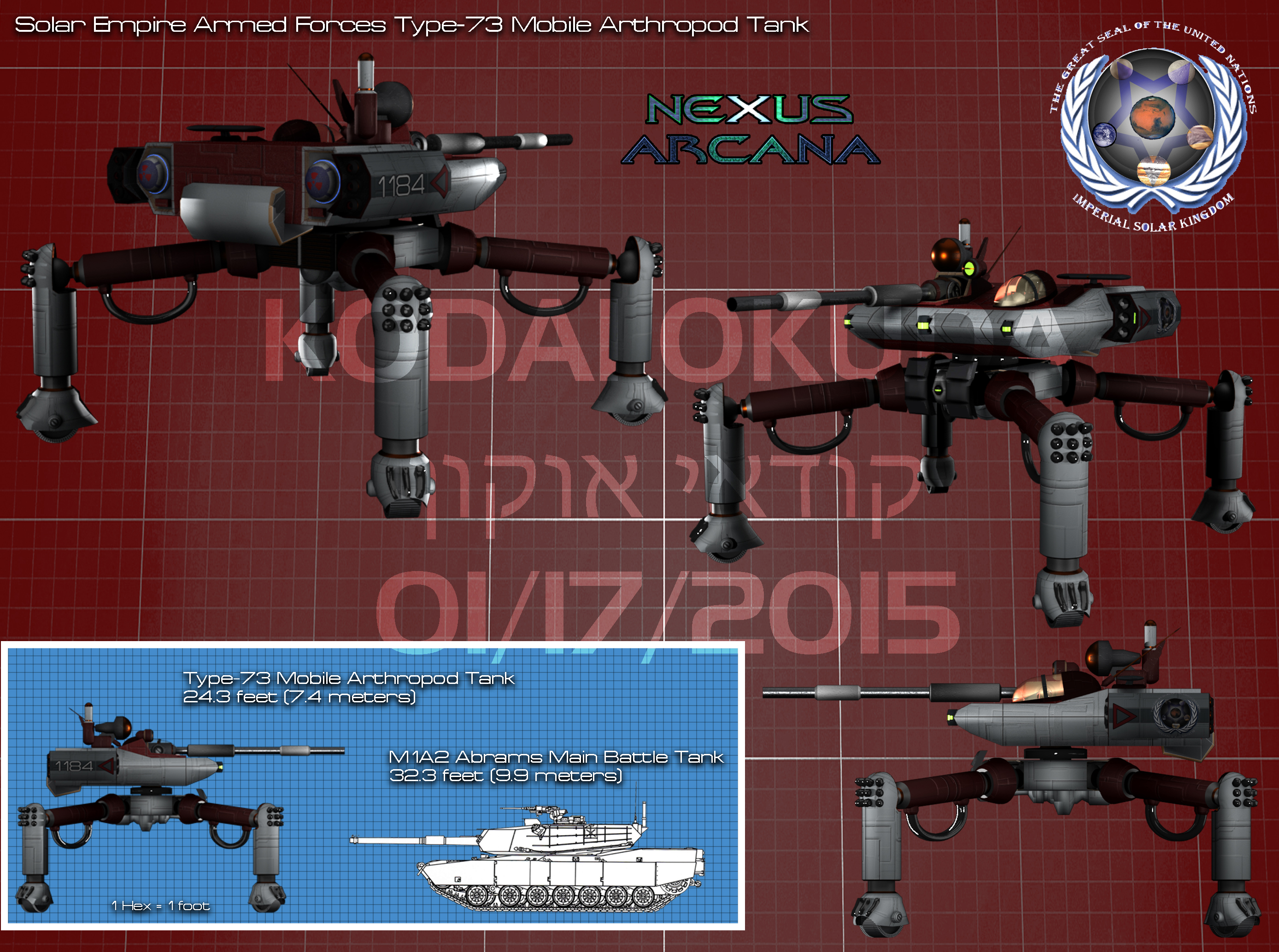SPECIFICATIONS

GOVERNMENT: UN Space Navy of the Soviet Solar Empire
TYPE: Mobile (Main after 2175 AD) Arthropod Tank
MODEL: Cydonia Research Type-73
DATE INTRODUCED: 2173 AD
LENGTH: 26 feet (7.9 meters)
WIDTH: 25 feet (7.6 meters)
HEIGHT: 25 feet (7.6 meters)
MATERIAL: Crystal Composite
POWER PLANT: Hensai Energy HEFR-4 fusion reactor
OUTPUT: 4000 kilowatts (4 megawatts)
ARMOR TYPE: Crystal Composite
ARMOR THICKNESS: 1.5 inches
DISPLACEMENT: 25 tons
CREW: 1 Pilot
PROPULSION
PRIMARY (TREADS):
1x UN-NT-1920 nuclear turbine
SPEED: 160 mph
PRIMARY (WALKER):
1x UN-WE-90 walker engine
SPEED: 90 mph
WEAPONS:
PRIMARY (OFFENSIVE):
1x Lithgear LG-AC120 120-millimeter autocannon; Effective Range: 7.9 miles; Payload: 200-round autoloading mechanical tray; ROF: up to 60 rounds per minute.
SECONDARY (OFFENSIVE):
2x Lithgear LG-ML5 5-pound missile launcher; Missile Type: UN-SRM-05 short-range five-pound laser-guided missile; Effective Range: 17 miles; Payload: 24 missiles; ROF: 1, 2 or 3 missiles within two seconds.
ELECTRONICS:
1x Microwave Radio Communications array with a 6000-mile range.
1x RADAR array with a range of 1000 miles.
6x Multispectral Video/Optical array with a range of 100 miles.
Description/Overview:
The Type-73 mobile arthropod tank was an act of desperation on the part of the Solar Empire. Introduced in 2173, this mecha was intended to go head-to-head with the MBR-01 series of battle robots. It was too-little, too-late to turn the tide of the war. The Solar Empire designed the machine to be a cheap, mass-produced, disposable combat unit intended to act as a stopgap measure until more powerful battle robots could be developed. The Type-73 was an extension of the old UN Type-41 multiped tanks used prior to the Great War.
The Type-73 was built in enormous numbers by the Solar Empire throughout the 1st Interplanetary War. It was the main combat unit used in the invasion of the Earth sphere during “Operation Blitzkrieg.” The Type-73 was also found in the hands of numerous pirate groups of the early 2180s and some examples of this machine survived well into the 23rd century in various private paramilitary groups.


